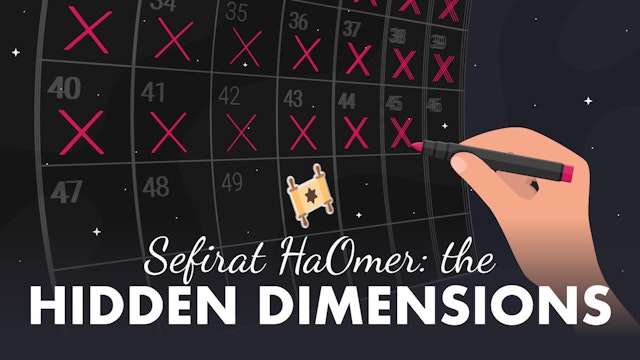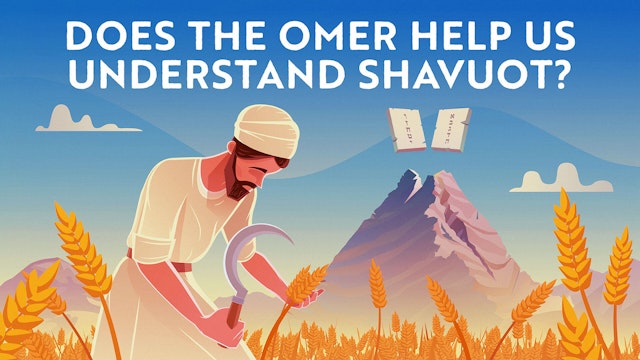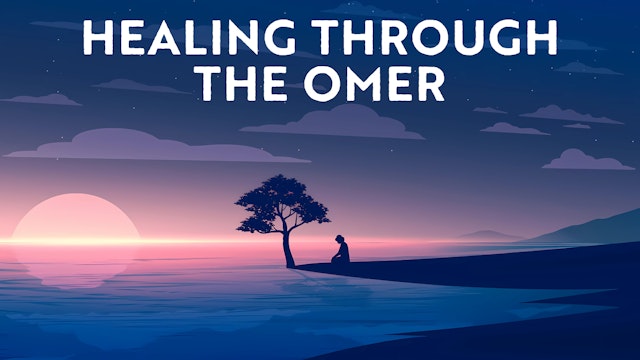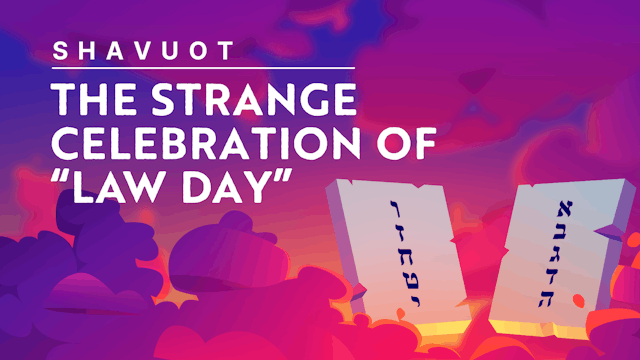Found 24 results for Sefirat HaOmer

Hidden Dimensions of Sefirat HaOmer, Part 1
↳ part 1 of 5 of the series "Hidden Dimensions of Sefirat HaOmer"
Hear Rabbi Fohrman's latest insights into the meaning of Sefirat Ha'Omer! This recording is from a live zoom series Rabbi Fohrman gave in partnership with the Five Towns-Far Rockaway Virtual Bais Medrash, April 27 - May 24, 2020.

Hidden Dimensions of Sefirat HaOmer, Part 5
↳ part 5 of 5 of the series "Hidden Dimensions of Sefirat HaOmer"
Hear Rabbi Fohrman's latest insights into the meaning of Sefirat Ha'Omer! This recording is from a live zoom series Rabbi Fohrman gave in partnership with the Five Towns-Far Rockaway Virtual Bais Medrash, April 27 - May 24, 2020.

Hidden Dimensions of Sefirat HaOmer, Part 3
↳ part 3 of 5 of the series "Hidden Dimensions of Sefirat HaOmer"
Hear Rabbi Fohrman's latest insights into the meaning of Sefirat Ha'Omer! This recording is from a live zoom series Rabbi Fohrman gave in partnership with the Five Towns-Far Rockaway Virtual Bais Medrash, April 27 - May 24, 2020.

Does the Omer Help Us Understand Shavuot? II
↳ part 2 of 2 of the series "The Meaning Of Sefirat Haomer"
Why do we count the Omer? A common answer is that we're counting down the days until we get to Sinai. But the Omer doesn't count down- it counts up. We don't say '8 days left to Sinai' we say '42 days are gone since we offered the Omer offering'. So what is this count about anyway? In this series, Rabbi Fohrman traces the roots of the Omer offering, taking us into a journey that explores the meaning of brick-making and bread-making, and the significance of both of these to the newly freed Israelites. What emerges is a view of the Omer that makes this offering a touchstone for an understanding of freedom, the Sabbath, and of law itself in our society.

What Is The Significance Of Counting The Omer?
↳ part 1 of 2 of the series "The Meaning Of Sefirat Haomer"
Why do we count the Omer? A common answer is that we're counting down the days until we get to Sinai. But the Omer doesn't count down- it counts up. We don't say '8 days left to Sinai' we say '42 days are gone since we offered the Omer offering'. So what is this count about anyway? In this series, Rabbi Fohrman traces the roots of the Omer offering, taking us into a journey that explores the meaning of brick-making and bread-making, and the significance of both of these to the newly freed Israelites. What emerges is a view of the Omer that makes this offering a touchstone for an understanding of freedom, the Sabbath, and of law itself in our society.

Sefirah and Uncertainty
↳ part 6 of 8 of the series "Sefirah, Prayer and Healing from Trauma"
Welcome to the second half of Refa’einu. In the first half of this course, Rabbi Fohrman and Imu explored Refa’einu, our prayer for healing, and its unexpected connections to Sefirat HaOmer. It turns out, this strange connection holds the key to understanding God’s promise to be our Healer, and may just be able to offer us the spiritual guidance a world battling COVID-19 deeply needs. In this second half of the course, Rabbi Fohrman and Imu turn from Refa’einu to dig even deeper into the theme of Sefirat HaOmer. If Sefirat Ha’omer is about the journey from Exodus until the giving of the Torah, then the story of marah, explored in earlier episodes, is only half that story. The other half is the next story in the Exodus saga: the story of the manna. This is a story of lack and scarcity, and the uncertainty which that brought to the Israelites. But it’s also a story that can teach us what it truly means to have faith, even in the worst of times.

Why All These References to Shabbat?
↳ part 7 of 8 of the series "Sefirah, Prayer and Healing from Trauma"
In the last episode, Rabbi Fohrman and Imu discovered a connection between Sefirat HaOmer and the story of the manna. In this episode, they dive deep into the meaning of that connection and what the miracle of the manna can teach us about appreciating our relationship with, and dependence upon, God. But the conversation doesn’t stop there. Once we understand the lesson of the manna, a question still remains: what does this have to do with Sefirat HaOmer, the time on our calendar when we prepare for receiving the Torah on Shavuot? The answer may lie in understanding a further connection between Sefirah, manna and... Shabbat. Listen to find out how this new piece of the puzzle adds an even richer dimension to Sefirat HaOmer, how it helps us prepare for Shavuot, and, ultimately, even connects back to the blessing of Refa’einu.

Why Is Shavuot Celebrated
↳ part 1 of 5 of the series "Why Does Shavuot Mean "Weeks"?"
"Shavuot! Laws!!! WOOHOO!!!"...said no one ever. So... why should we be excited about celebrating Shavuot? About the day when we honor the giving of the Torah? A super pious person might say: "We're rejoicing in the obligations that God placed upon us!", and while that sounds really nice and religious, let's get real: those laws are burdensome. So why are we pretending that they're so great? And when you think about when God imposed these mitzvot on us, you have to ask: Wasn't it pretty lousy timing? We received the Torah fewer than two months after leaving bondage in Egypt. It's like we just got done celebrating our freedom from one master, from Pharaoh, and all of a sudden, God swoops in and says, "It's nice being free, huh? BAM!! 613 laws. You answer to Me now. Say bye-bye to your freedom. How do you like that?" And... that's what we're celebrating on Shavuot??! Look, no one's suggesting that we defy God. He's... God. The laws are the laws. But do we really have to be excited about it? Watch this video and get excited about why we celebrate Shavuot. For real. Discover other great Shavuot videos at Aleph Beta, including ‘The Origin of Shavuot’, ‘Our Guide To Celebrating Shavuot’, and more Shavuot Divrei Torah & Videos!

The Hidden Link Between Refa'einu and the Exodus
↳ part 1 of 8 of the series "Sefirah, Prayer and Healing from Trauma"
Refa’einu is a plea for health found in the Shemoneh Esrei prayer. As the world continues to battle COVID-19, what better text to turn to for spiritual guidance. But when you take a close look at this prayer, something remarkable emerges. Refa’einu has an unexpected connection to Sefirat HaOmer, the period on our calendar that marks the time between the Exodus from Egypt and the giving of the Torah. Could understanding the deeper meaning of the Omer somehow help us understand Refa’einu? Could this connection help us learn to relate to God as our healer? Join Rabbi Fohrman and Immanuel Shalev, as they take a deep dive into Refa’einu and its Torah references, to shed light on what it means to truly heal--emotionally and spiritually. In this first episode of the series, Rabbi Fohrman and Imu begin their journey by looking closely at the language of Refa’einu. It turns out, this prayer is hinting at an event from the Exodus story. But it’s not one of the obvious contenders, like the plagues, or the splitting of the sea. It’s the strange story of the bitter waters the Israelites came to shortly after entering the desert, and how God turned these waters sweet for them. What does this have to do with Refa’einu? Listen to find out. To subscribe to Refa’einu vis RSS, copy this link and add it to your favorite podcast app: https://feeds.buzzsprout.com/1066483.rss